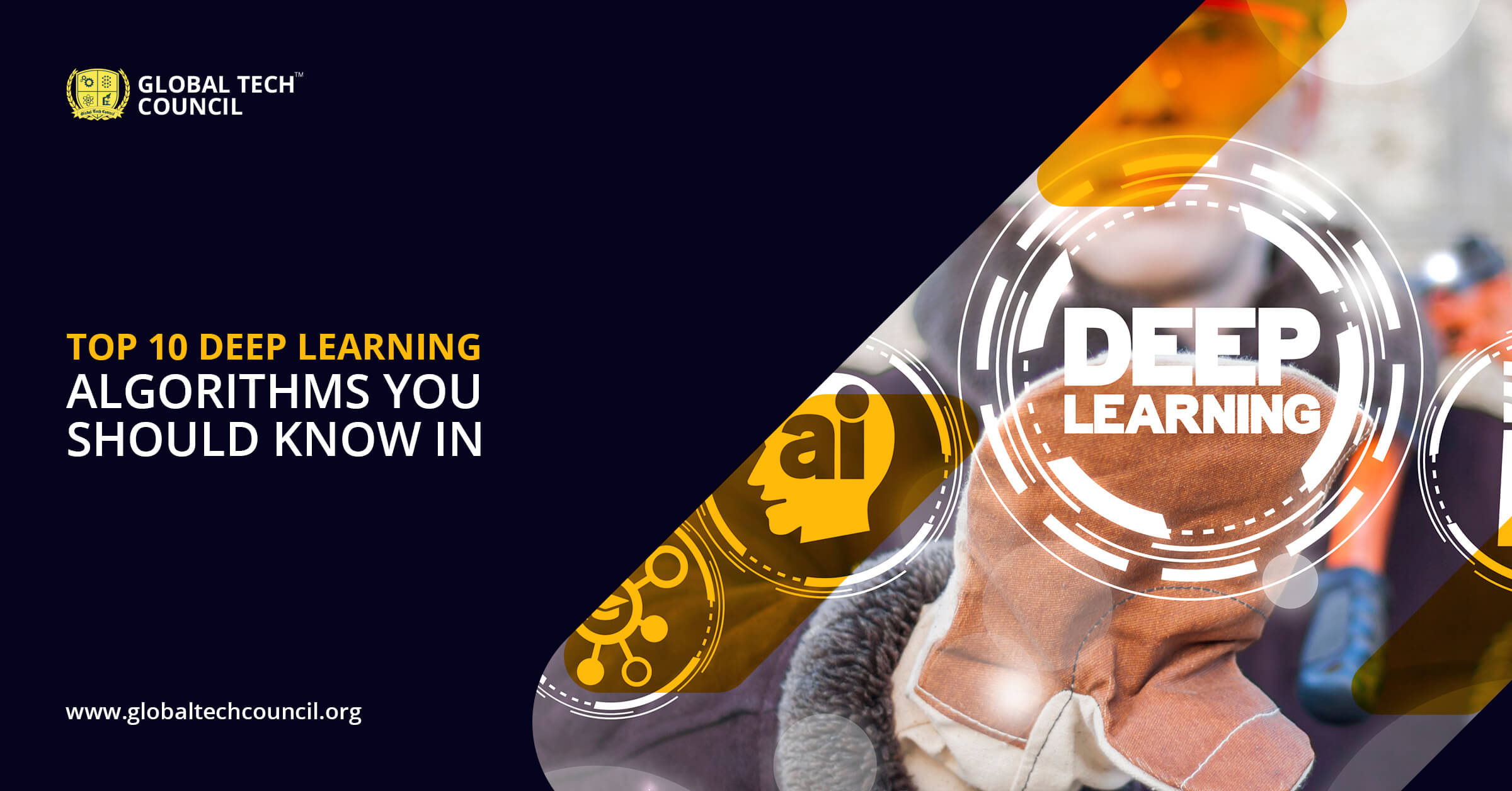
In scientific computing, deep learning has gained immense popularity, and its algorithms are commonly used by companies that solve complex problems. In order to perform complex functions, all deep learning algorithms use multiple forms of neural networks.
This article discusses virtual artificial neural networks and how algorithms in deep learning work to simulate the human brain.
Blog Contents
- What is Deep Learning?
- The Concept of Neural Networks
- How do algorithms for deep learning work?
- Types of Algorithms for Deep Learning
- Conclusion
What is Deep Learning?
Deep learning uses artificial neural networks on vast volumes of data to execute complex computations. It is a form of machine learning that operates based on the human brain’s structure and function.
By learning from examples, deep learning algorithms teach computers. Deep learning experts are widely used for sectors such as health care, e-commerce, entertainment, and advertisement.
The Concept of Neural Networks
Like the human brain, a neural network is organized and composed of artificial neurons, often referred to as nodes. In three layers, these nodes are clustered next to each other:
- The layer of input
- The hidden layer(s)
- The layer of output
Data gives information in the form of inputs to any node. With random weights, the node multiplies the inputs, calculates them, and applies a bias. Finally, to determine which neuron to shoot, nonlinear functions are added, also known as activation functions.
How do algorithms for deep learning work?
While deep learning algorithms emphasize self-learning representations, they rely on ANNs that reflect the way knowledge is computed by the brain. Algorithms use unknown elements in the input distribution during the training phase to isolate attributes, group objects, and discover helpful data patterns. This happens at various stages, using the algorithms to create the models, almost like teaching computers for self-learning.
Several algorithms are used by deep learning models. Although no single network is known to be optimal, some algorithms are ideally suited to particular tasks. It’s good to obtain a solid knowledge of all critical algorithms to pick the best ones.
Types of Algorithms for Deep Learning
To solve complicated problems, deep learning algorithms work with almost any kind of data and require massive quantities of computational power and knowledge. Now let us dig deeper into the top algorithms for deep learning.
- Neural Networks in Convolution (CNNs)
CNN’s, also known as ConvNets, are made up of several layers that are primarily used to process images and track objects. In 1988, when it was renamed LeNet, Yann LeCun created the first CNN. It was used with characters like ZIP codes and digits to be remembered.
CNN’s are commonly used for the identification of satellite imagery, the preparation of diagnostic images, time series forecasting, and the detection of anomalies.
- How Are CNN’s Working?
CNN’s have several layers that process and extract data characteristics:
- Layer Of Convolution
To execute the convolution process, CNN has a convolution layer that has multiple filters.
- Linear Unit Rectified (ReLU)
To conduct operations on modules, CNN has a ReLU layer. A rectified function map is the performance.
- Layer of Pooling
The rectified function map next feeds into a layer of pooling. Pooling is an operation of down-sampling that reduces the dimensions of the function map.
By flattening it, the pooling layer then transforms the resulting two-dimensional arrays from the pooled feature map into a single long, continuous linear vector.
- Layer Totally Linked
As the flattened matrix from the pooling layer is fed as an input, which classifies and labels the images, a completely connected layer forms.
- Extended Networks for Short Term Memory (LSTMs)
LSTMs are a kind of recurrent neural network (RNN) that can learn long-term dependencies and memorize them. For a long time, remembering past knowledge is the default action.
Over time, LSTMs retain details. In time-series prediction, they are useful because they recall previous inputs. LSTMs have a chain-like system in which four communicating layers interact in a unique fashion. LSTMs are usually used for speech recognition, music composition, and pharmaceutical growth, in addition to time-series predictions.
- Recurrent Neural Networks (RNNs)
RNNs have connections that form guided loops, allowing the LSTM outputs to be fed to the current process as inputs.
The output from the LSTM becomes an input to the current stage and, owing to its internal memory, will memorize previous inputs. For image captioning, time-series analysis, natural-language processing, handwriting recognition, and computer translation, RNNs are widely used.
- Generative Adversarial Networks (GANs)
GANs are generative algorithms for deep learning that generate new data instances that resemble the data from training. There are two components of GANs: a generator that learns to create false data and a discriminator that learns from that inaccurate data.
Over time, the use of GANs has grown. They can be used for dark-matter experiments to boost astronomical images and model gravitational lensing. Video game developers use GANs by recreating them in 4Kor higher resolutions through image training to upscale low-resolution, 2D textures in old video games.
GANs help produce accurate images and characters from comics, create pictures of human faces, and render objects in 3D.
- Deep Belief Networks(DBNs)
DBNs are generative structures of stochastic, latent variables that consist of several layers. There are binary values of the latent variables, and they are also called secret units.
DBNs are a Boltzmann Machine stack of layer-to-layer links, and each RBM layer interacts with the previous and subsequent layers. For image-recognition, video-recognition, and motion-capture data, DBNs are used.
Conclusion Over the former five years, deep learning has advanced, and algorithms for deep understanding have been widely popular among certified deep learning experts.